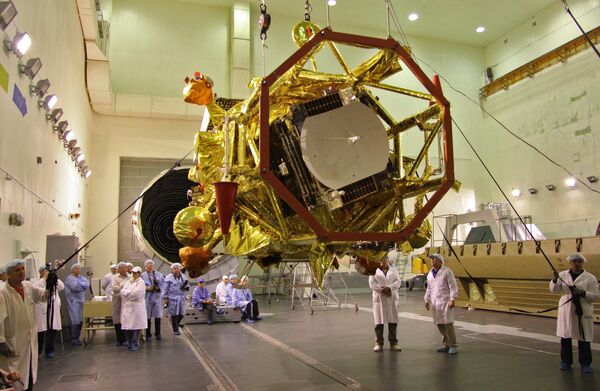A robotic spacecraft to the Mars moon Phobos launched early on Wednesday has failed to reach a flying orbit after separation from the launch vehicle, the head of Russia’s Federal Space Agency said.
The Zenit-2 launch vehicle carrying the Phobos-Grunt probe lifted off from the Baikonur space center at 00.16 a.m. Moscow time (20:16 GMT on Tuesday). The spacecraft was supposed to use its own booster to reach the designated flying trajectory, but failed to do so.
“It has been a tough night for us because we could not detect the spacecraft [after the separation],” Vladimir Popovkin said. “Now we know its coordinates and we found out that the [probe's] engine failed to start.”
“It is a complex trajectory, and the on-board computers could have simply failed to send a “switch on” command to the engine,” Popovkin said, adding that it is an emergency situation, which has been anticipated and could be corrected.
“We will attempt to reboot the program. The spacecraft is currently on a support orbit, the fuel tanks have not been jettisoned, and the fuel has not been spent,” he said.
According to Popovkin, the technicians have three days to start the on-board engine and put the probe on the designated trajectory before the batteries run out.
The ambitious Phobos-Grunt mission is aimed at bringing back soil samples from Phobos in 2014 to pave the way for the exploration of the Red Planet.
The $163-million spacecraft carries an array of 20 instruments designed to gather and transmit data from the vicinity of Mars and from the surface of Phobos.
The potential loss of the Phobos-Grunt probe could deliver another serious blow to the country’s space exploration program as Russia has previously failed several attempts to send unmanned spacecraft to Mars.




